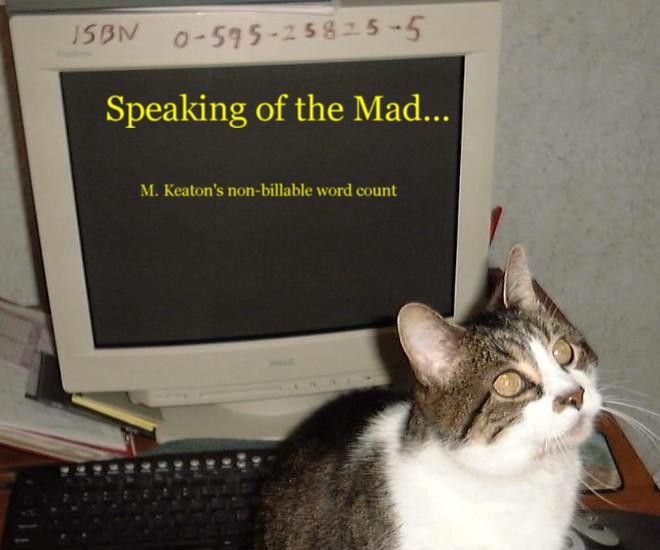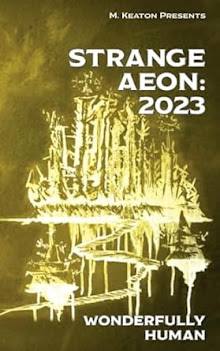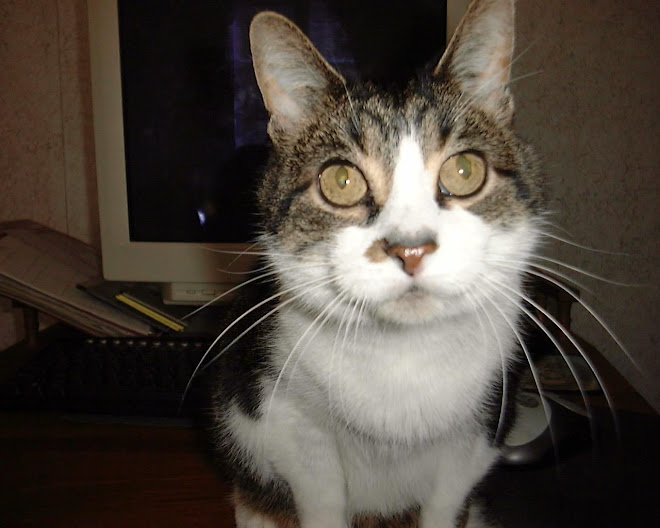On the newsstands right now you should find the August issue of Realms of Fantasy magazine. This is a relaunch of the magazine under a new publisher and I was given the privilege of reviewing the new, resurrected magazine.
Now, to be honest, I have a real interest in seeing the magazine succeed. Not only is it a market for my work but, more importantly, it’s a short story market and the industry desperately needs these markets. The fiction editor (Shawna McCarthy) expounds on this importance in her editorial in the magazine but, in this, she’s late to the party. John Scalzi and I were discussing the importance of the short fiction magazines as a proving ground for the next generation of authors years ago.
Well, the magazine is out and it’s time for all the people who lamented its demise to put their money where their mouths have been and support it. I have my own opinions on the ‘new’ RoF and I’ll share them but my job here is to tell you what the magazine is and let you know if it’s of use and interest to you.
When I first got my copy in the mail, my first thought was that there had been a mistake and I’d received a catalogue for self-published and small press POD paranormal romance books instead. The magazine is ad heavy (about one-third advertisements). Of 84 pages (including the covers), roughly 24 of these are ads plus big pull-out envelope of stuff in the middle. Don’t misunderstand; I’m not opposed to advertising in a magazine. These ads are part of what a magazine offers, letting me know what the market is doing and keeping me abreast of new titles hitting the shelves. In this case, however, I was distressed to see that the production value of some of the ads was extremely low—so low, in fact, that I think they hurt the overall appeal and professional look of the magazine. A bad ad makes the magazine looks bad. I understand the financial side of magazine publishing and the difficulties involved here, especially when bringing a magazine back from oblivion, but I do hope that this is a problem that will be solved in the future as RoF can become more selective and demand a certain minimum level of production value in its advertisers.
I also wasn’t thrilled with the quality of the magazine itself (specifically, pages started falling out of the middle) but this is not the publishers fault. My copy came through a PO box and the big envelope of advertising stuff was pulling the staples out and putting undue strain on the spine. No big deal, but not an auspicious beginning.
Before I get further into specifics, let me give you an overview of what the magazine is and who it’s written for. (Yeah, yeah, I know: “For whom it is written”.) If you like the old RoF, you’ll be right at home—there hasn’t been much change. If you’re not familiar with the old one, let me see if I can give an honest overview.
RoF is not purely a magazine of fantasy fiction. It’s better classified as a magazine generally covering all things fantasy—movies, games, music, art, etc.—with a few short stories thrown in as well. By my count, in this issue, 53% of the actual content (after ads) took the form of reviews of one sort or another and only 37% was made up of fiction (four stories). Further, it doesn’t address all types of fantasy (fantasy is a pretty broad category). It focuses more on mermaids, fuzzy dragons and cats, “Goddess Ripper” genre of stuff. Again, that’s not a complaint but if you’re looking for noir sword-and-sorcery or space opera, this is not the magazine for it.
I would describe (rather tongue in cheek) the demographic of RoF as young women ages 14 to 40 with unicorn posters on the wall and a firm belief that purple is the bestest color in the world. (Which it is, by the way.) Take a look at the spines on your bookshelf and add up the various publisher logos. Mostly Avon/Eos? Subscribe now. Tor? You’ll probably like it. Daw? Definitely worth a look and you’ll at least want to pick up the occasional issue that has an author who interests you. Baen? Don’t bother. Golden Eagle? Walk away slowly; there’s no reason for anyone to get hurt over a magazine. If Tanith Lee and Charles deLint are as gods to you and you cried for days when MZB died, this is your kind of stuff.
Let’s crunch some numbers on this issue: 84 pages for a cover price of $6.99. 24 pages of ads, 3 pages of editorial necessities like the Table of Contents, and 57 pages of actual content. Of this, 5 full page pieces of art (one is the cover), 5 pages of game reviews, 5 reviewing a movie, 7 devoted to music (I think; more on this later), 8 pages of book reviews including YA and graphic novel, a 6-page spread highlighting artist Michael Hague and showing his art, and, finally, about 21 pages of fiction. Put a different way, that’s $2.59 for the stories, $3.71 for reviews, and $0.69 for the artist. Is that worth your money? Depends on what you’re looking for; I’m the wrong person to ask. Personally, I’m a story kind of guy and for this kind of money I could buy an entire book. Still, if you wanted a book, you wouldn’t be in the magazine section so the question you have to answer is: Is this ratio one that satisfies you?
The execution of the magazine is a bit on the soft side—copy-editing goofs, the quality of the internal art is low, page layouts could be better, the font changes sizes at times—there is a list of things I could nitpick, but it boils down to the fact that the magazine needs to develop and employ a consistent style guide, and I expect they will. This is, after all, a first issue of sorts. One of these nits looms large to me though. Some (but not all) of the reviewers get a bio at the end of their piece, but none of the authors do. That, to me, is unacceptable and must be corrected.
Wednesday, July 29, 2009
Subscribe to:
Post Comments (Atom)





















No comments:
Post a Comment